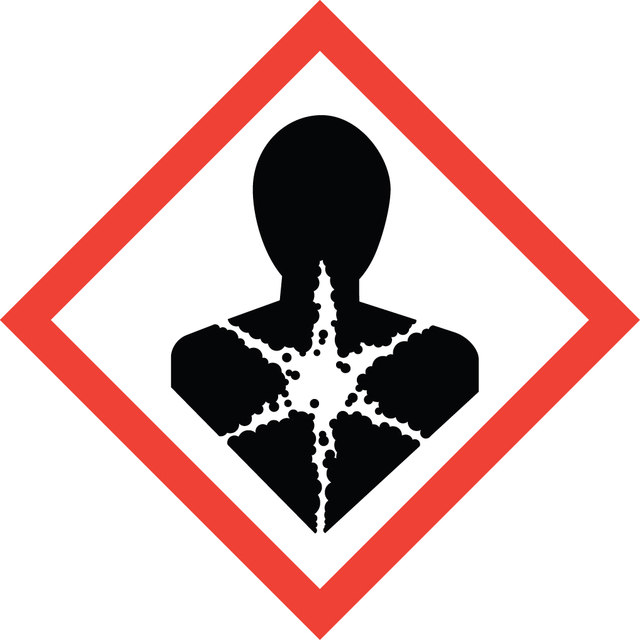Select a Size
About This Item
biological source
Streptomyces griseus
Quality Level
type
Type XIV
form
powder
specific activity
≥3.5 units/mg solid
solubility
10 mM NaAc (pH 7.5) and 5 mM CaAc: soluble 0.2 mg/mL at 37 °C, clear, colorless to tan
shipped in
wet ice
storage temp.
−20°C
Looking for similar products? Visit Product Comparison Guide
Related Categories
General description
Application
- for the digestion of nucleus pulposus (NP) tissue
- in the catalysis of asymmetric one pot Mannich reaction
- for deproteinization of starch
- digestion of brain slices for the cell dissociation
Biochem/physiol Actions
Features and Benefits
- highly stable in pH range of 5.0 to 9.0, with peak activity at pH 8.8
- compatible with many DNA and RNA isolation buffers
- broad substrate specificity
Preparation Note
Analysis Note
Other Notes
Signal Word
Danger
Hazard Statements
Precautionary Statements
Hazard Classifications
Eye Irrit. 2 - Resp. Sens. 1 - Skin Irrit. 2 - STOT SE 3
Target Organs
Respiratory system
Storage Class Code
11 - Combustible Solids
WGK
WGK 2
Flash Point(F)
Not applicable
Flash Point(C)
Not applicable
Personal Protective Equipment
Regulatory Information
Choose from one of the most recent versions:
Already Own This Product?
Find documentation for the products that you have recently purchased in the Document Library.
Is Product P5147, Protease from Streptomyces griseus, also described as "Pronase"?
"Pronase E" is the name given to a group of proteolytic enzymes produced by Streptomyces griseus K-1. At least 10 proteases are in the mixture, five serine-type proteases, two zinc endopeptidases, two zinc leucine aminopeptidases, and one zinc carboxypeptidase.
Does Product P5147, Protease from Streptomyces griseus, contain calcium acetate?
This product contains calcium acetate buffer salt. The amount of calcium acetate present will vary for each lot number and has been observed to range from 2 - 30% (w/w).
How should Product P5147, Protease from Streptomyces griseus, be reconstituted and how should a stock solution be prepared?
This product can be dissolved in 0.01 M sodium acetate with 0.005 M calcium acetate at pH 7.5 at 37°C; at 0.2 mg/mL, this yields a clear solution which ranges from colorless to light tan. Calcium ion is recommended for protection from autolysis. The activity of a dilute enzyme solution containing 0.01 to 0.1 M calcium ion was stable over 24 hours at neutral pH at 2-8°C. Pronase E is stable at 4°C for at least six months. Stock solutions of 5 to 20 mg/mL in water are usually stored at -20°C.
Under what conditions can Product P5147, Protease from Streptomyces griseus, be used to digest protein?
For DNA isolation, Pronase E is usually prepared as a stock solution, and prior to storage at -20°C, the solution is first heated to 56°C for about 15 minutes, then incubated at 37°C for 1 hour. This encourages self-digestion, to eliminate DNAse and RNAse contamination. The enzyme is added to a DNA sample (in the presence of 0.5-1%(w/v) SDS to disrupt DNA protein interactions) typically at 250-500 μg protein/mL, then incubated at 37°C for 1-4 hours. For protein hydrolysis, dissolve about 0.2 μmol of protein in 0.2 mL of 50 mM ammonium bicarbonate buffer at pH 8 (or phosphate buffer pH 7). Add Pronase to 1% (w/w) and incubate at 37°C for 24 hours. It may be necessary to add aminopeptidase M at 4% (w/w) and incubate at 37°C for another 18 hours.
Which document(s) contains shelf-life or expiration date information for a given product?
If available for a given product, the recommended re-test date or the expiration date can be found on the Certificate of Analysis.
How do I get lot-specific information or a Certificate of Analysis?
The lot specific COA document can be found by entering the lot number above under the "Documents" section.
How do I find price and availability?
There are several ways to find pricing and availability for our products. Once you log onto our website, you will find the price and availability displayed on the product detail page. You can contact any of our Customer Sales and Service offices to receive a quote. USA customers: 1-800-325-3010 or view local office numbers.
What is the Department of Transportation shipping information for this product?
Transportation information can be found in Section 14 of the product's (M)SDS.To access the shipping information for this material, use the link on the product detail page for the product.
My question is not addressed here, how can I contact Technical Service for assistance?
Ask a Scientist here.
Related Content
Our team of scientists has experience in all areas of research including Life Science, Material Science, Chemical Synthesis, Chromatography, Analytical and many others.
Contact Technical Service
